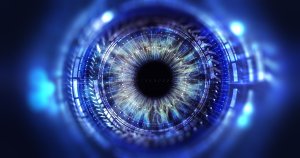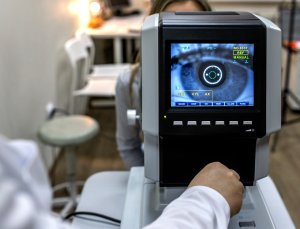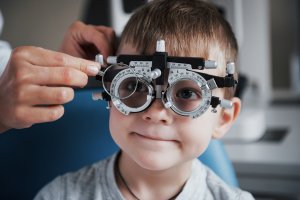How is diabetic retinopathy diagnosed?

Voted Best of Berks—
eight years in a row!

Diabetic retinopathy is the most common diabetic eye disease. Diabetic retinopathy affects blood vessels in the light-sensitive tissue called the retina that lines the back of the eye. It is the most common cause of vision loss among people with diabetes and the leading cause of vision impairment and blindness among working-age adults.
Diabetic retinopathy and DME are detected during a comprehensive dilated eye exam that includes:
- Visual acuity testing. This eye chart test measures a person’s ability to see at various distances.
- Tonometry. This test measures pressure inside the eye.
- Pupil dilation. Drops placed on the eye’s surface dilate (widen) the pupil, allowing a physician to examine the retina and optic nerve.
If you have diabetes, a careful, comprehensive eye examination by one of our diabetic eye specialists is the first step. Our doctors use very specialized technologies — and years of training and experience — to examine your eyes and check for the presence of disease. At your examination, your doctor will personally discuss with you the health of your eyes, how your condition is affecting your vision and what treatment options are available.
Find a Doctor
Physician information including education, training, practice location and more.
Schedule an Appointment
Call 800-762-7132 or make an appointment online.





